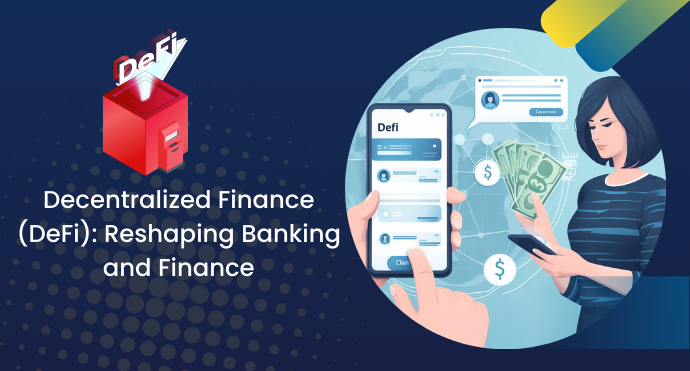Decentralized finance (DeFi) is not just a buzzword; it’s a revolutionary financial system that’s changing the way we interact with money. Built on blockchain technology, DeFi offers openness, transparency, and security, while eliminating the need for traditional intermediaries such as banks. In this blog post, we’ll explore how DeFi is transforming banking and finance, its real-life examples, and its future potential.
The Growth of DeFi:
DeFi has experienced rapid growth in recent years, with staggering statistics to prove its significance:
1. Market Growth: The global DeFi market is expected to grow from $71.7 billion in 2022 to an astounding $285.4 billion in 2026, representing a compound annual growth rate (CAGR) of 38.4%.
2. User Adoption: The number of DeFi users has surged from a mere 400,000 in January 2020 to over 10 million in March 2023, demonstrating its expanding user base.
3. Value Locked: The total value locked in DeFi protocols has skyrocketed from $1 billion in January 2020 to over $100 billion in March 2023, reflecting the trust and capital invested in this technology.
Real-Life DeFi Examples:
Let’s delve into some real-life examples of DeFi platforms and their functions:
1. Aave: Aave is a decentralized lending platform that enables borrowing and lending of assets without traditional banks.
2. Uniswap: Uniswap is a decentralized exchange that allows asset trading without a central authority.
3. MakerDAO: MakerDAO is a decentralized stablecoin platform that maintains the stability of the Dai stablecoin.
4. Compound: Compound is a decentralized lending platform that allows individuals to earn interest on their assets.
5. Synthetix: Synthetix is a decentralized asset platform that permits the creation and trading of synthetic assets.
How DeFi Reshapes Banking:
DeFi is already making waves in the banking sector, and here’s how:
1. Lending: DeFi lending platforms make accessing loans quicker and more straightforward, particularly for individuals with poor credit or those in need of fast loans.
2. Payments: DeFi enables swift and cost-effective money transfers without reliance on traditional banks, a game-changer for international payments.
3. Trading: DeFi exchanges provide users with more control over their assets, reducing fees and enhancing accessibility.
The Future of DeFi:
As it’s still in its early stages, DeFi holds incredible potential for revolutionizing the banking industry. By improving accessibility, efficiency, and cost-effectiveness, it can contribute to creating a more inclusive and equitable financial system.
Conclusion:
Decentralized finance (DeFi) is not just a financial trend; it’s a transformative force that’s redefining banking and finance. Built on blockchain technology, DeFi offers transparency, accessibility, and security while reducing our reliance on traditional banks.
By reshaping the landscape of banking, DeFi is making financial services more accessible, efficient, and cost-effective. As it matures, it promises to create a more inclusive and equitable financial system, offering individuals around the world the financial services they deserve.
Additional Thoughts:
While DeFi’s potential is vast, it’s essential to be aware of the risks associated with this emerging technology. DeFi protocols can be vulnerable to hacking, and there’s no central authority to safeguard users in case of losses. Despite the risks, the benefits of accessibility and transparency make DeFi an attractive option for those underserved by traditional banking.
Remember, as the DeFi landscape evolves, it’s crucial to stay informed and exercise caution when engaging in these decentralized financial systems.



